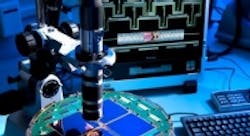NASA telescope observes evidence of creation of the Universe
NASA astronomers have announced that—using the BICEP2 telescope—they’ve acquired the first direct evidence that gravitational waves rippled through our universe less than a trillionth of a second after the universe burst into existence (the Big Bang), during a period of growth called inflation.
During this period, the universe supposedly expanded, or inflated, by 100 trillion trillion times, in less than the blink of an eye some 13.8 billion years ago. Telltale signs of this are imprinted in the skies in a relic glow called the cosmic microwave background, according to NASA. This theory of the universe was recently confirmed by the Planck satellite, a European Space Agency mission for which NASA provided detector and cooling technology, but researchers have long sought additional evidence for inflation in the form of gravitational waves, which are responsible for squeezing and stretching space.
Gravitational waves produce a swirly pattern in polarized light called “B-mode polarization.” Light can become polarized by scattering off surfaces, and in the case of the cosmic microwave background, light scattered off electrons to become slightly polarized, which serves as a "telltale sign" of the proof and existence of gravitational waves.
The researchers involved with BICEP2 pulled together experts from the Jet Propulsion Laboratory, Stanford University, Harvard University, and the University of Minnesota, Minneapolis to perform experiments to detect these swirl-patterns, and as a result of research they have been conducting since 2006, the team was able to produce compelling evidence for B-mode polarization, and with it, the strongest evidence for the Big Bang Theory.
Findings were made by using the NASA-developed Background Imaging of Cosmic Extragalactic Polarization 2 (BICEP2) telescope on the South Pole, in collaboration with the National Science Foundation. BICEP2’s optical system features a simple 26 cm aperture all-cold refractor housed in a liquid helium-cooled cryostat with a focal plane array of 512 planar antenna-coupled devices with voltage-biased transition-edge sensor (TES) detectors and a multiplexed superconducting quantum interface device (SQUID) readout. BICEP2 observed at 150GHz and operates at 0.25 Kelvin, just 0.45°F above the lowest temperature achievable, which is absolute zero (−459.67°F).
This discovery, the results of which have been submitted to the journal Nature, helps confirm that the universe inflated dramatically and provides theorists with the first clues about the exotic forces that drove space and time apart, according to NASA.
View the NASA press release.
Also check out:
Hubble captures image of mysterious disintegrating asteroid
NASA’s Kepler spacecraft discovers 715 new planets
Australian astronomers discover oldest known star in the Universe
Share your vision-related news by contacting James Carroll, Senior Web Editor, Vision Systems Design
To receive news like this in your inbox, click here.
Join our LinkedIn group | Like us on Facebook | Follow us on Twitter | Check us out on Google +
About the Author

James Carroll
Former VSD Editor James Carroll joined the team 2013. Carroll covered machine vision and imaging from numerous angles, including application stories, industry news, market updates, and new products. In addition to writing and editing articles, Carroll managed the Innovators Awards program and webcasts.
